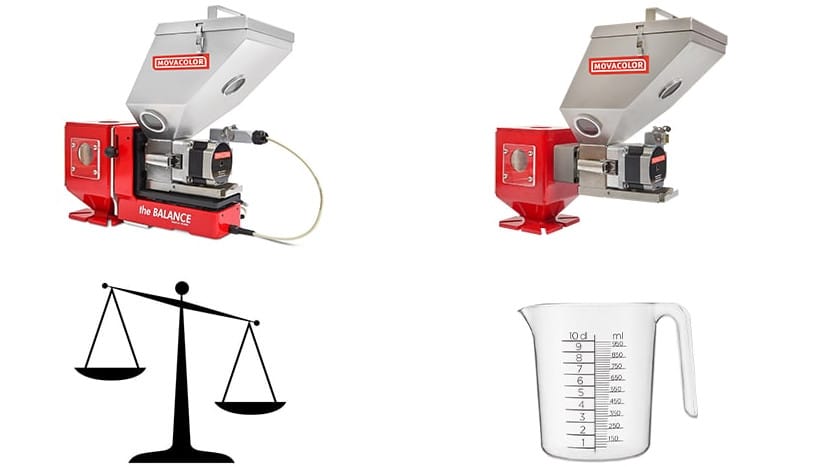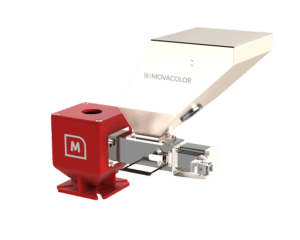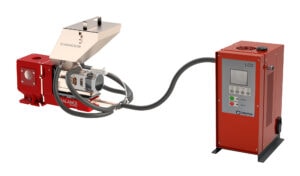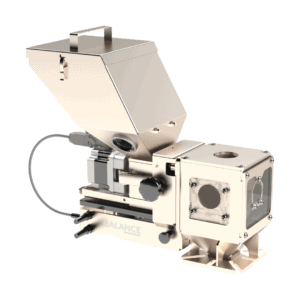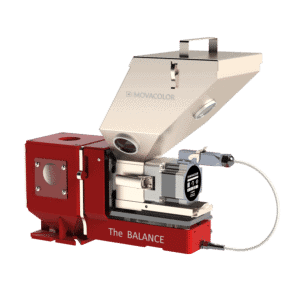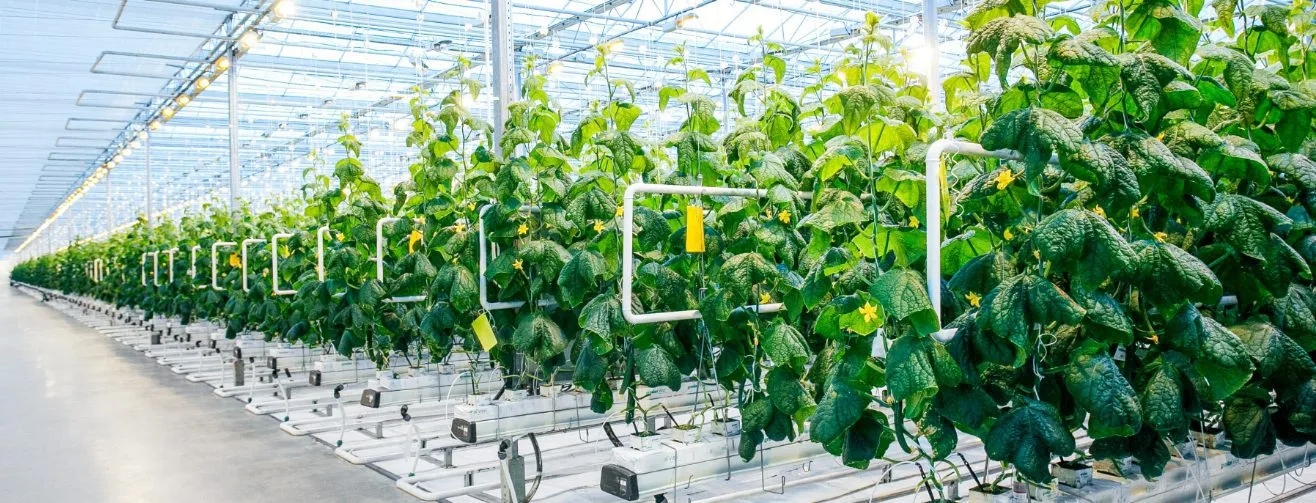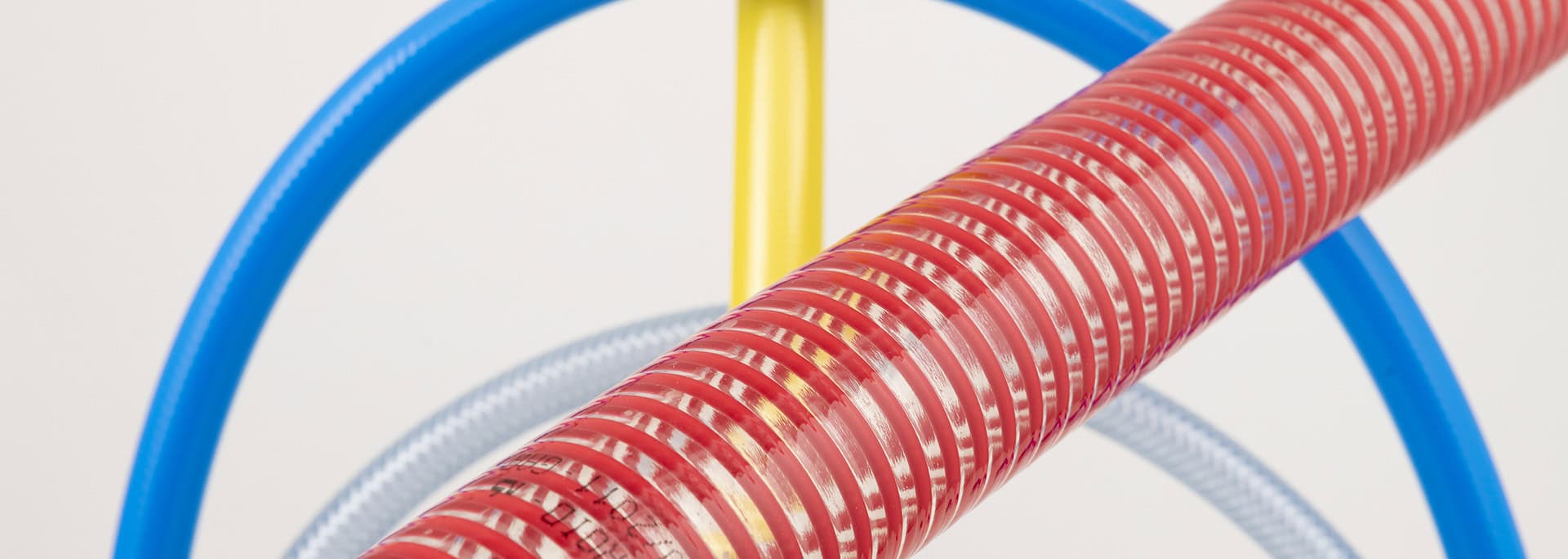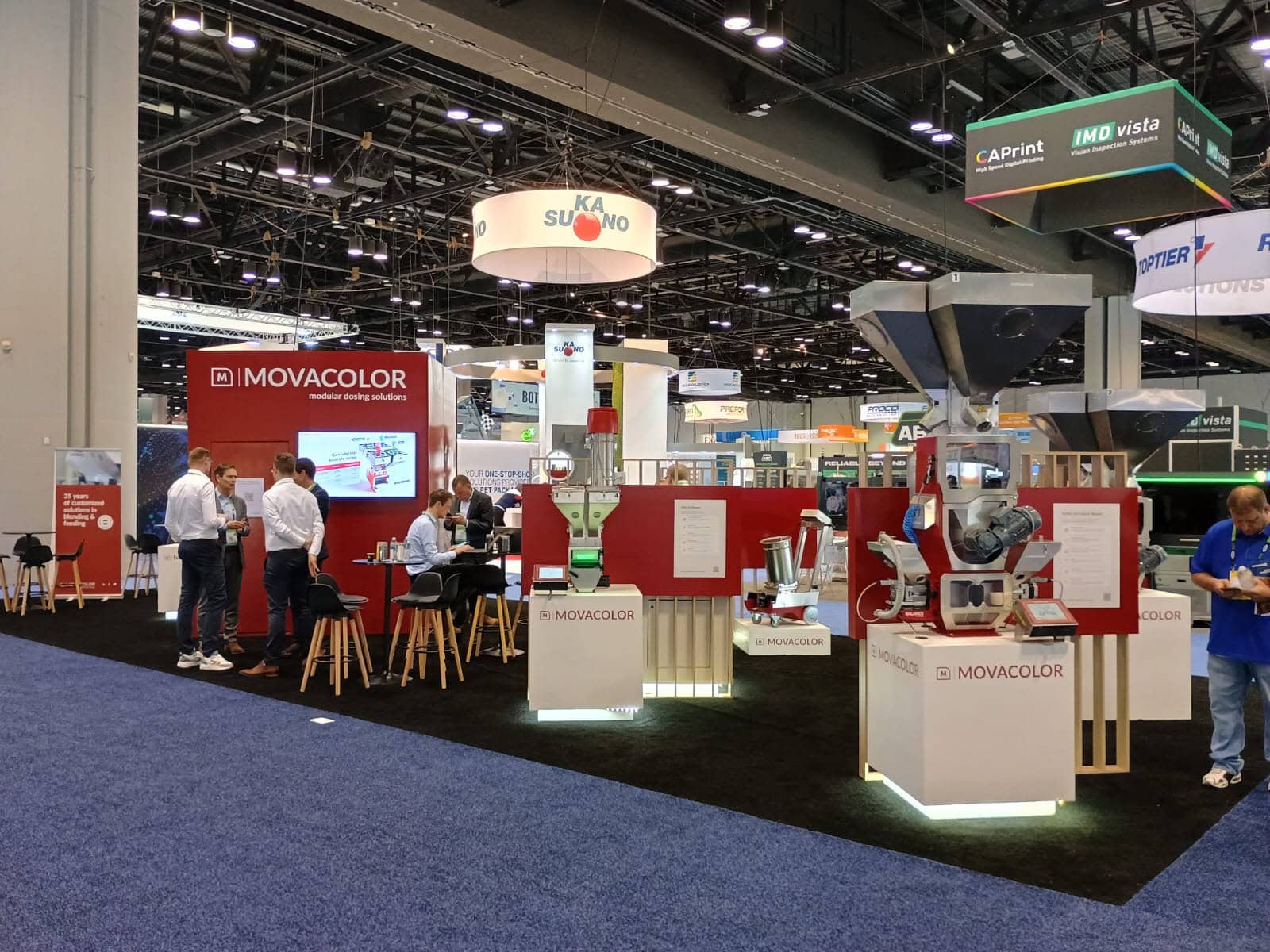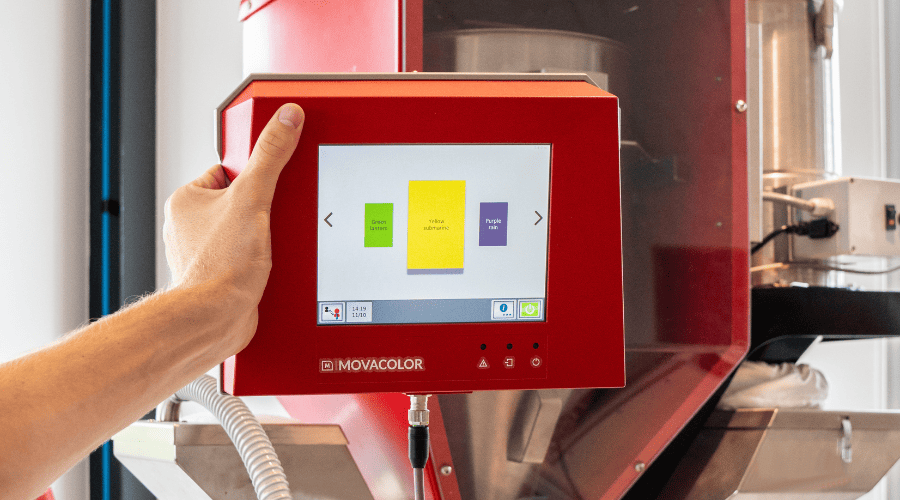Both dosage systems are furnished with a hopper, neck piece, controller, stepper motor, and dosage cylinder or screw feeder. In terms of speed, Movacolor’s stepper motors have a range of 0.1 to 200 rpm and therefore can be set very accurately. In addition, the unique Movacolor dosage cylinder makes sure the additive is dosed in-line in a nice smooth flow of material without pulsations, which produces output of consistent quality.
Features and benefits of a gravimetric feeder?
A gravimetric feeder, also know as a loss-in-weight feeder, is a self-calibrating dosing system that doses based on weight in speed. A volumetric feeder, on the other hand, does this based on volume in speed. In gravimetric dosing, the weight of the dosed additive is measured using a load cell that is the foundation of the entire system. Weight is calculated using loss-in-weight technology, which measures the reduced weight while dosing.
In the self-calibrating gravimetric feeder system, the stepper motor automatically alters its speed when a change is detected in the material flow. This eliminates the need for manual adjustment, which is required when using a volumetric feeder. Such a change in material flow can be the result of the addition of new material or fluctuations in the material density, among other factors. This means that, when using a gravimetric feeder to dose, you are in complete control of the quality of your final product. Thanks to the gravimetric feeder’s self-calibrating dosing system, you will never run the risk of overdosing and will therefore automatically save costs when using expensive additives.
In addition to the advantages offered by the self-calibrating technology, a gravimetric feeder from Movacolor is easy to operate using the touch screen controller. Movacolor’s gravimetric feeder can also be provided with optional monitoring and reporting software. This software allows for close monitoring of the production process for quality management purposes, and any errors in the production process are quickly discovered.
Features and benefits of a volumetric feeder?
A volumetric feeder is a dosing system that supplies the production system with a certain volume of material in a set timeframe, based on the so-called displacement principle. In contrast to a gravimetric feeder, the dosing speed of a volumetric feeder should be selected manually, which may vary based on the nature of the raw input materials. For example, masterbatch requires a different speed compared to dosing of liquid or powder input material.
For smaller production processes and companies who are looking to save on dosing equipment, a volumetric feeder is favoured over a gravimetric feeder. Yet, a gravimetric feeder enables one to save heavily on the input material by a more precise feeding process. This means that a gravimetric feeding system usually provide for a higher return of investment (ROI) on a long-term basis.
